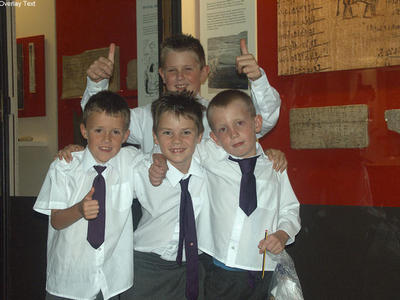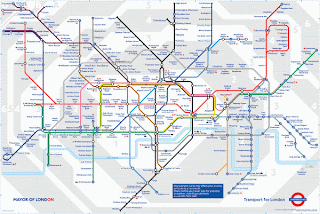I spent my last full day in the UK in Guildford. My host works in Guildford and I needed a relaxing day before I left. Guildford is another one of the UK’s (really) old towns dotted around the country. Another feature of the town was there is a castle to see; well, the remains of a castle.
I wanted to see a castle!
Guildford turned out to be a very charming (I can use descriptive words too) town. You know it’s a town and not a village because villages did not have market days, only towns and cities did. To continue, I walked into the town center; down the path and over the bridge, and towards the tourist information center. I needed to know what to see and how to get there…didn’t I?
Well, I tried to get to the castle, but they were repaving the paths and all signs indicated I should try another entrance, except all the entrances had the same sign…POO! This was not going to work; I walked down to the Guildford Museum; a small historical museum all about Guildford…who’d a thunk it?
The museum had local artifacts and information about the people that lived in the area. There was also information about Lewis Carroll (1832-1898), author of Alice’s Adventures in Wonderland and Through the Looking-Glass. He lived there, although he didn’t seem to be home….can’t understand why.
With instructions from the museum, I tried the castle again, success…sorta, I just walked on the newly paved walkway to the entrance.
The castle was amazing! Another 900-year-old building!!
The newly erected main floor made it easy to see the possible layout of a Norman castle. I was also able to walk up to the tower using one of the spiral staircases. The view from the roof was comparable to what I could see from the top of St Paul’s or the London Eye.
I wanted to see the Guildford Cathedral, but distance made it impossible; I did get some pictures from the roof of the castle.
I wandered down to the river to take some pictures of the locks and the birds, ducks and swans almost everywhere. With most of the “wild” animals they did not fly off as I approached. I didn’t have anything to feed them. They would have to look for food the way nature intended.
Time to head back. I found my bearings and made my way back to where we were going to meet to go home. I was a bit early and there was nowhere to sit. I decided to follow a footpath to see where it would lead me. I had nothing to lose, except my way (no bread crumbs) I followed the path along the backs of a row of houses towards a clearing, and then I walked through a small field and up a hill. As I turned to continue going up the hill, I saw an amazing site. I had no idea what it was, except that it was the ruins of a building. I’m pretty smart that way.
I was in awe of what was there, and completely unexpected. I was not able to find out more about it until I got home. Unfortunately there is not much information out there. Here is what I was able to find:
St. Catherine’s Hill and Chapel On the summit of this hill stands the ruin of St Catherine’s Chapel built in the 13th (14th?) Century by the rector of St Nicolas’ church. The chapel was abandoned by the end of the middle ages, the church can be seen from across the valley and river and the hill makes a fantastic viewing platform.
Some (very) brief information about Guildford
The historic town of Guidlford is home to an historic guildhall and clock, castle gardens (the castle was built by the Normans, and at one time a palace of Henry III stood on the site), and the home of Lewis Carroll’s family—author of Alice in Wonderland. The Guilford House gallery is located in a 17th century townhouse, built between 1660 and the 1680s, that houses an art gallery. A museum houses artefacts and gives details of local history.
Here is some information about Guildford Castle.
Guildford Castle started out as a Norman motte and bailey castle, built soon after 1066. The wooden defences were replaced by stone ones during the 12th century, and the motte acquired first a shell keep and then the strong but not very large tower keep that survives today. As the only royal castle in Surrey it became the centre for administration and justice, with the keep converted to use as the county gaol. The royal apartments were moved to a palace in the bailey below, which under Henry III became one of the most luxurious royal residences in England.
keep that survives today. As the only royal castle in Surrey it became the centre for administration and justice, with the keep converted to use as the county gaol. The royal apartments were moved to a palace in the bailey below, which under Henry III became one of the most luxurious royal residences in England.
After Henry III’s death in 1272 the castle fell into decline, and the palace buildings were allowed to fall into ruin. In 1611 the castle was bought by a Guildford merchant, Francis Carter, who attempted to convert the keep into a private residence. This proved unsuccessful, and in 1630 the roof and floors were removed. In 1885 the ruins were bought by Guildford Borough Council.
Other Buildings of note in Guildford
The Guildhall is a Tudor building to which a 17th century facade has been added (1683). The most prominent feature is the clock overhanging the street. The date on the clock is 1683, the inner works were much older (c 1560) but over the years as parts have worn these have been replaced. The original bell, now cracked and replaced with a new bell, came from St Martha’s Church (on the ridge above Chilworth). The iron balcony is used for important proclamations. Within, in the old court-room are a set of standard measures presented to the town by Elisabeth I. These measures are one of the few complete sets in existence.
Abbot’s Hospital (Hospital of the blessed Trinity), an imposing redbrick building was founded as an almshouse by George Abbot, a local man who rose to become Archbishop of Canterbury.
On the top section of the High Street lies the Royal Grammar School. Founded in 1509, granted a charter by Edward VI in 1553. The school contains a chained library, started with books bequeathed to the school (1573) by John Parkhurst, Bishop of Norwich, a native of Guildford. The books include Sir Walter Raleigh’s History of the World, written whist he was a prisoner in the Tower of London. A document (1598) referring to a match of cricket played by the boys (c 1550) is one of the earliest references to the game. Two models of the earliest cricket bats are on display within the library.



